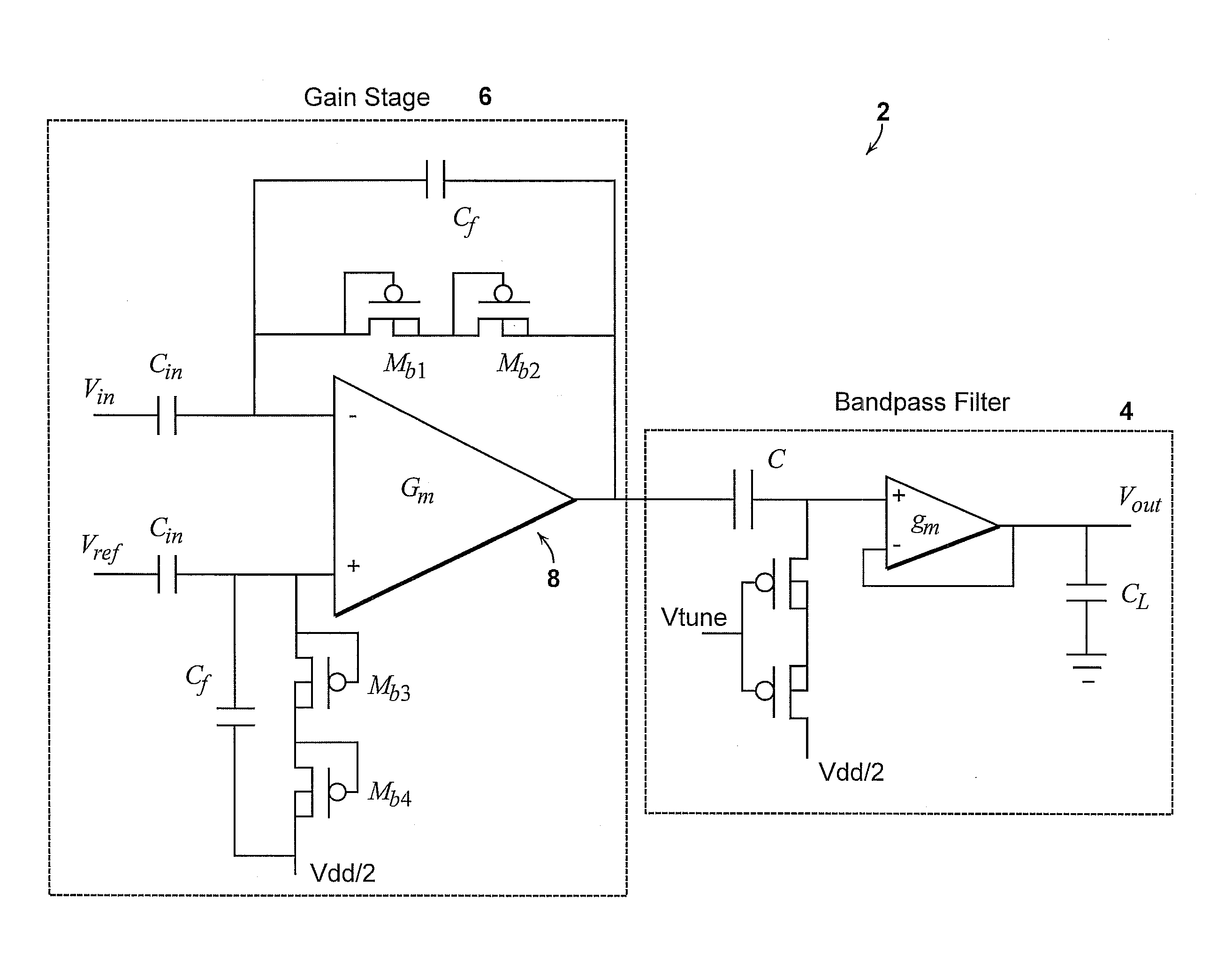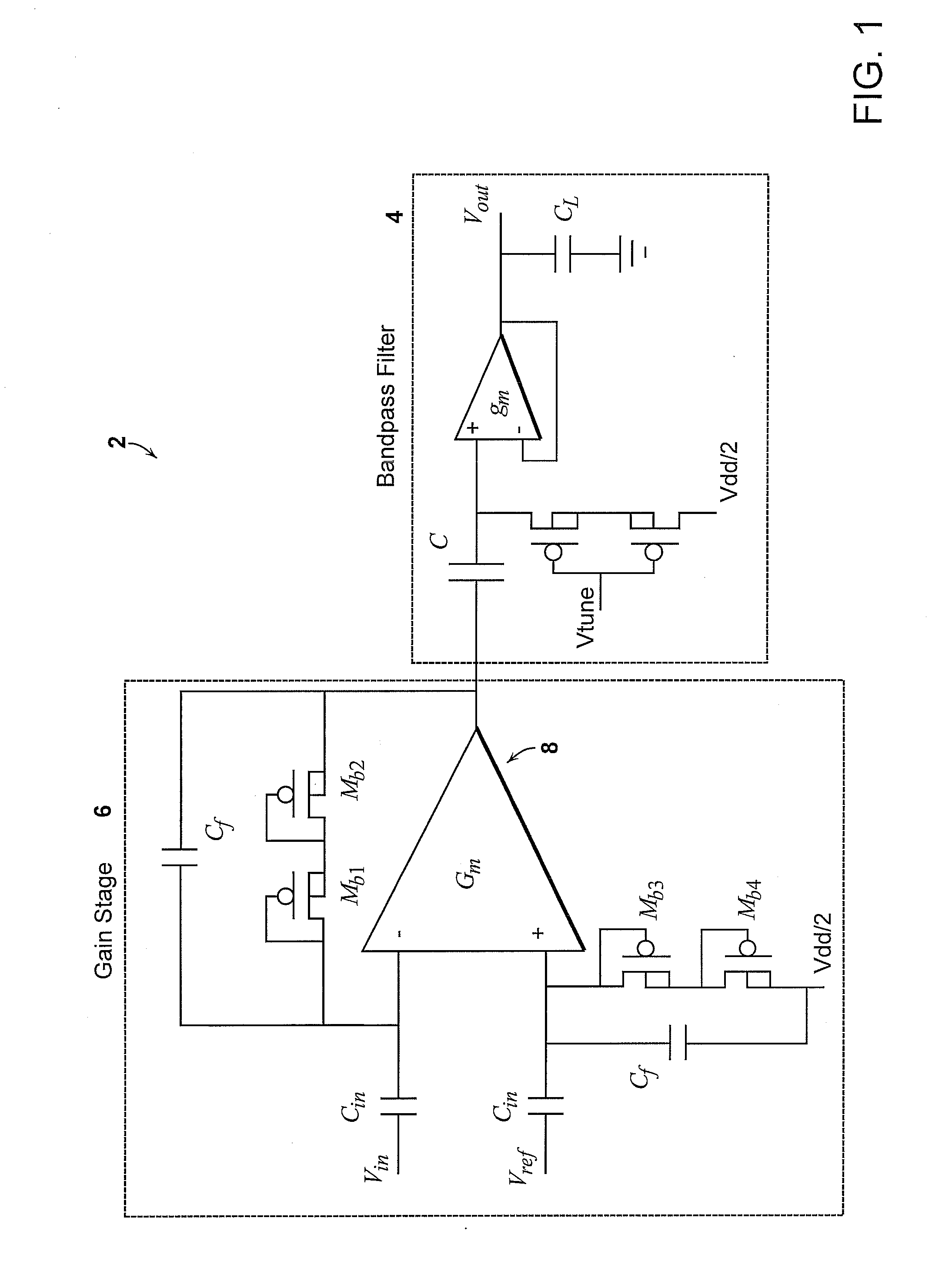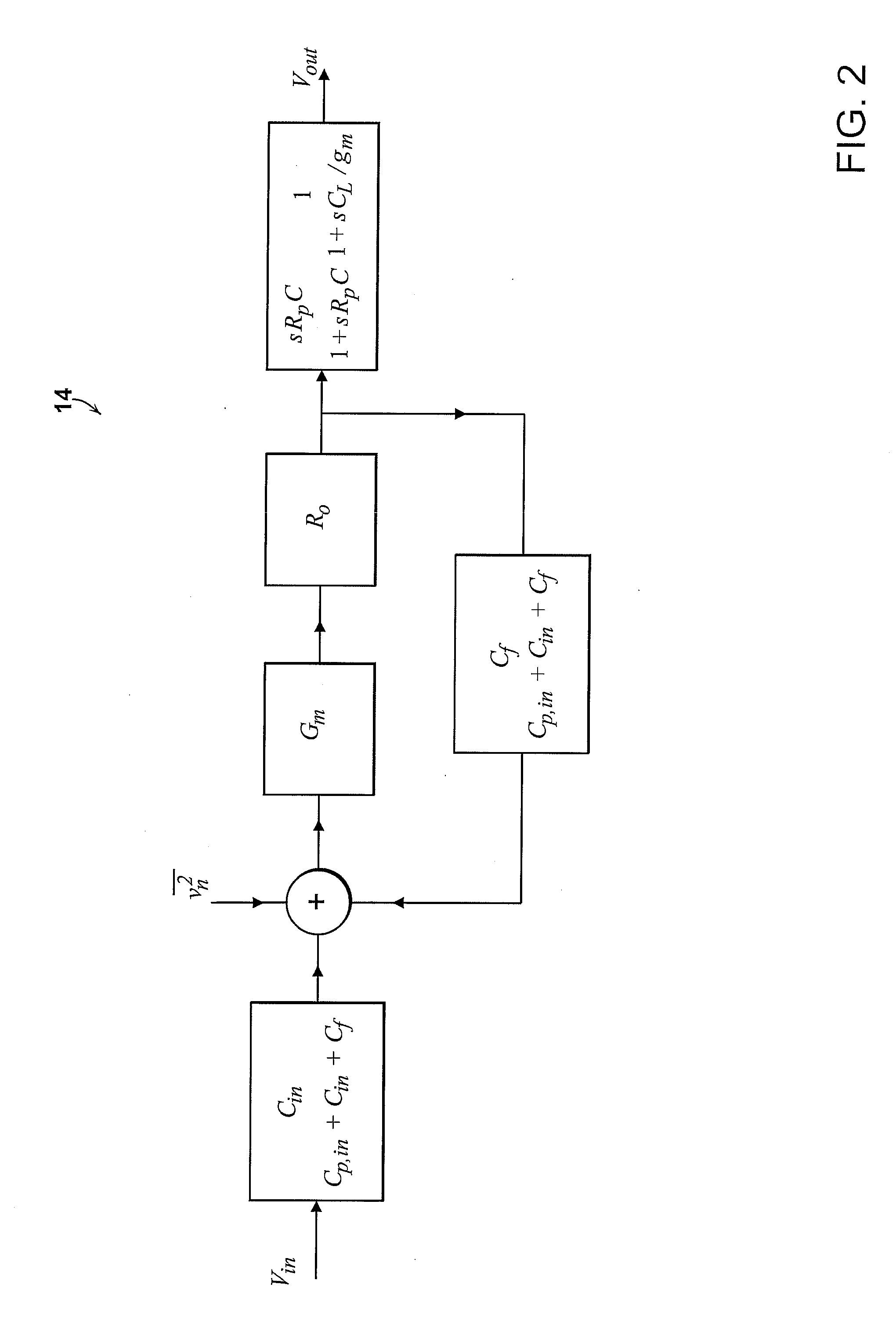Micropower neural amplifier with adaptive input-referred noise
a neural amplifier and input-referred noise technology, applied in the field of ultralow-power neural recording amplifiers, can solve the problems of limiting the power efficiency of the multi-electrode system, the power required for the neural amplifier can become the limiting factor of the whole multi-electrode system, and the power required for the neural amplifier can become the limiting factor of the whole system, etc., to achieve low noise gain, low noise gain, low noise gain
- Summary
- Abstract
- Description
- Claims
- Application Information
AI Technical Summary
Benefits of technology
Problems solved by technology
Method used
Image
Examples
Embodiment Construction
[0027]The invention involves an ultra-low-power neural recording amplifier. The amplifier appears to be the lowest power and most energy-efficient neural recording amplifier reported to date. Low-noise design techniques are used that help the neural amplifier achieve input-referred noise that is near the theoretical limit of any amplifier using a differential pair as an input stage.
[0028]The overall schematic of a neural amplifier 2 is shown in FIG. 1. The neural amplifier 2 includes a bandpass filter stage following a gain stage 6 to shape the passband of the amplifier 2. The low-frequency high-pass cutoff of the gain stage 6 is created by the MOS-bipolar pseudoresistor element formed by Mb1-Mb2 and the capacitance Cf. The capacitive feedback formed by Cf and Cin sets the midband gain of the amplifier 2 to approximately 40.8 dB. The high-pass cutoff and the low-pass cutoff frequencies of the amplifier 2 can be adjusted via Vtune and the bias current of the gm-OTA in a bandpass-filt...
PUM
 Login to View More
Login to View More Abstract
Description
Claims
Application Information
 Login to View More
Login to View More - R&D
- Intellectual Property
- Life Sciences
- Materials
- Tech Scout
- Unparalleled Data Quality
- Higher Quality Content
- 60% Fewer Hallucinations
Browse by: Latest US Patents, China's latest patents, Technical Efficacy Thesaurus, Application Domain, Technology Topic, Popular Technical Reports.
© 2025 PatSnap. All rights reserved.Legal|Privacy policy|Modern Slavery Act Transparency Statement|Sitemap|About US| Contact US: help@patsnap.com



